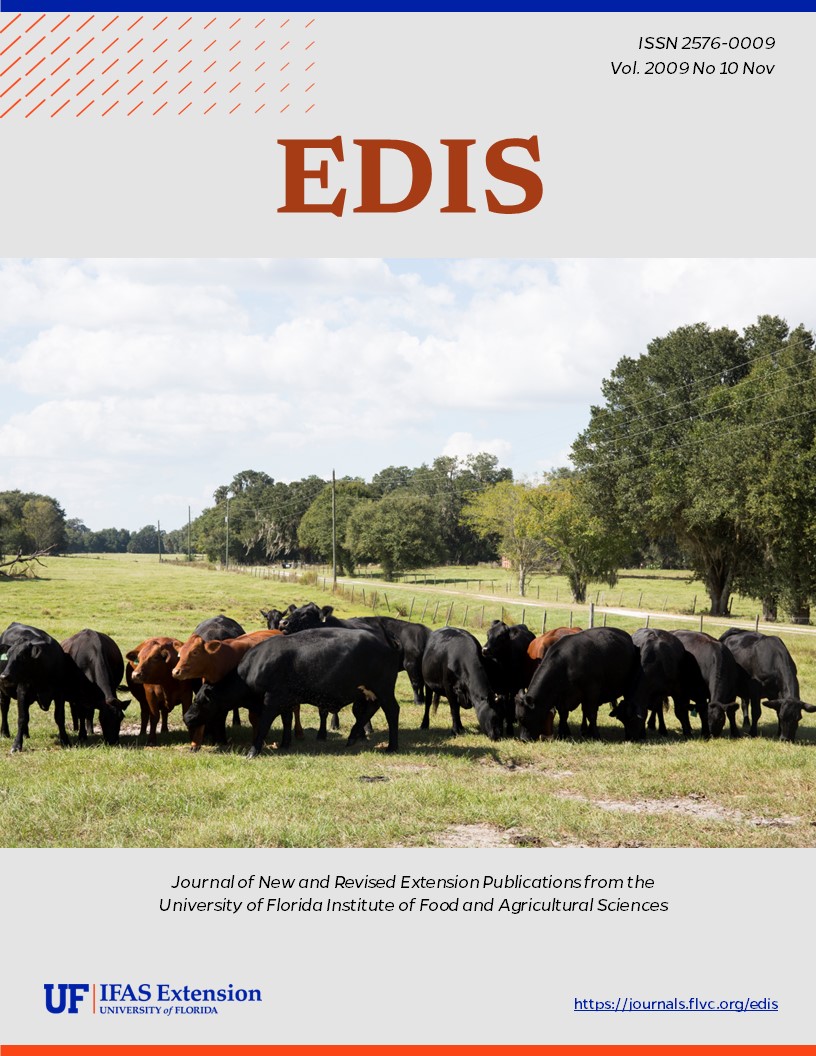Abstract
Revised! Circular 1402, a 7-page fact sheet by Mark A. Mossler and Jonathan Crane, provides an overview of production and pest management practices for papaya in Florida. Includes references. Published by the UF Department of Horticultural Sciences, November 2009. Reviewed July 2013.
References
Personal communication, Jonathan Crane, October 2008.
Crane, J.H., Balerdi, C.F., and Orfanedes, M.S. 2007. Tropical and Subtropical Fruit Crops for the Home Landscape: Alternatives to Citrus. Horticultural Sciences document HS812. Florida Cooperative Extension Service, Institute of Food and Agricultural Sciences, University of Florida. https://doi.org/10.32473/edis-mg373-2005
Crane, J.H. 2005. Papaya Growing in the Florida Home Landscape. Horticultural Sciences document HS11. Florida Cooperative Extension Service, Institute of Food and Agricultural Sciences, University of Florida.
Compendium of Tropical Fruit Diseases. Ed. R.C. Ploetz. 1998. The American Phytopathology Society Press, St. Paul, MN.
Pena, J.E., and Johnson, F.A. 2006. Insect Management in Papaya. Entomology and Nematology document ENY-414. Florida Cooperative Extension Service, Institute of Food and Agricultural Sciences, University of Florida.
Selman, H.L. 2007. Papaya Fruit Fly. Department of Entomology and Nematology, University of Florida, and Florida Department of Agriculture and Consumer Services, Division of Plant Industry Featured Creatures website.
Weems, H.V. 1969. Papaya Fruit Fly (Toxotrypana curvicauda Gerstaecker), 1860 (Diptera: Tephritidae). Florida Dept. Of Ag. Div. Of Plant Industry Entomol ogy Circular No. 86.
Fasulo, T.R. and Denmark, H.A. 2007. Twospotted Spidermite. Department of Entomology and Nematology, University of Florida, and Florida Department of Agriculture and Consumer Services, Division of Plant Industry Featured Creatures website.
UF/IFAS Pesticide Information Office. 2001. Tropical Fruit Management Survey. Agronomy Department, Institute of Food and Agricultural Sciences, University of Florida.
Crane, J.H. and Mossler, M.A. 2006. Pesticides Registered for Tropical Fruit Crops in Florida. Horticul tural Sciences document HS929. Florida Cooperative Extension Service, Institute of Food and Agricultural Sciences, University of Florida.
Anonymous pesticide pricing.
FMC labels, Philadephia, PA.
Arysta labels, Cary, NC.
Webb Wright labels, ft. Myers, FL.
Knapp, J.L. February 1999. Citrus Commodity: A Biologic and Economic Assessment of Pesticide Usage. USDA National Agricultural Pesticide Impact Assess ment Program Report No. 1-CA-99.
Monsanto labels, St. Louis, MO.
Syngenta labels, Research Triangle Park, NC.
DuPont labels, Wilmington, DE.
Pernezny, K. and Litz, R.E. 2003. Some Common Diseases of Papaya in Florida. Plant Pathology Depart ment Document PP35. Florida Cooperative Extension Service, Institute of Food and Agricultural Sciences, University of Florida.
Dow AgroSciences labels, Indianapolis, IN.
Drexel labels, Memphis, TN.
McSorley, R., Parrado, J.L., and Conover, R.A. 1983. Population Buildup and Effects of the Reniform Nematode on Papaya in Southern Florida. Proc. Fla. State Hort. Soc. 96:198-200.

